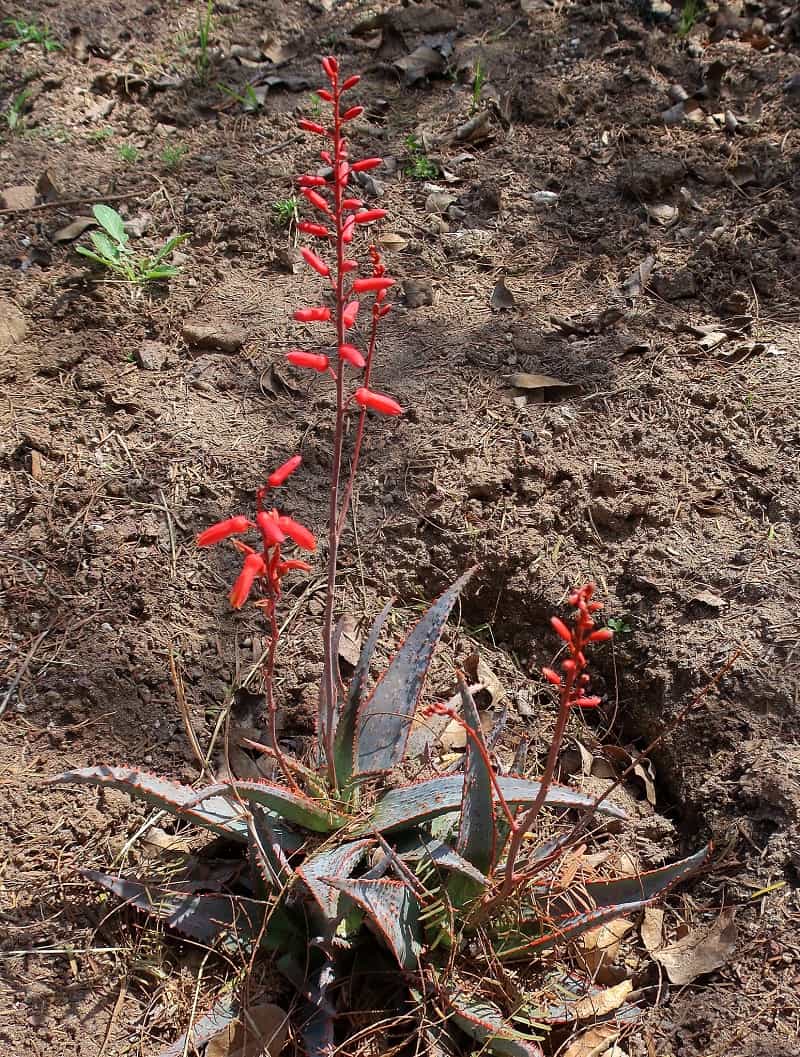What characterizes Aloe Christmas Carol and the difference of other aloes; Its leaves are stiffer and less fleshy, so they store less water.
Its leaves have a certain texture (bulges), which makes it a beautiful and different plant.
When this plant is exposed to the sun, its leaves begin to turn a very beautiful reddish red hue.
Another characteristic of this plant is that it is one of the toughest aloes you can find, both from excess water and lack of water.
The Christmas Carol aloe is slow growing, therefore it does not require a frequent transplant and is not very resistant to cold.
Aloe Christmas Carol is a small succulent that grows in the form of blackthorn, which can reach 30 cm high and 15 cm wide approximately.
Its leaves are dark green and are spear-shaped, it has some spines in the center and along the margin of the leaf.
Tips to take care of the Aloe “Christmas Carol”
Illumination
All plants of the genus Aloe need a lot of light to grow healthy and bloom to the fullest.
It is recommended to expose the plants to direct sunlight in the less warm times of the year and move to semi-shade or under filtered light in summer.
The intense summer sun is the main cause of many burns on the leaves of most species.
Temperature
They are plants that appreciate growing in cool or hot climates.
Some species survive in environments where daytime temperatures exceed 40 ° C; They are plants of hot climates.
Temperatures below 10 ° C are dangerous for these plants because they encourage the proliferation of fungi in the roots and consequently the rot of these and the plant.
In countries with extreme winters it is always recommended to grow in vessels to be easily transported to a warmer environment (examples: greenhouses, home interior, etc.).
Substratum
They are mostly quite resistant to growing on a wide variety of substrates but provided they have optimal drainage and good aeration. 2/3 of universal substrate or garden soil with 1/3 of coarse sand or gravel can be used.
Irrigation Frequency
They are “succulent plants” very well adapted to tolerate extensive droughts, that is, they prefer water scarcity than excess.
They are susceptible to rot if the substrate remains wet for a long time. It is advisable to water when the substrate has dried completely (usually 1-2 times weekly) if the plant is in the growing season; in a state of latency we must reduce the frequency to biweekly or monthly.
Pruning
These plants are not pruned. Only leaves and flower spikes that have already dried should be removed to prevent them from being attacked by opportunistic pests.
Plant of the genus Aloe with dry leaf that needs to be removed to avoid future pests
Transplant
These plants are usually colonial, forming numerous daughter plants at their base creating groups of many plants in a single area.
In many cases the pots do not support the large number of plants and tend to break (depends on the clear material); It is recommended to transplant when the roots arise through the drainage holes or when the daughter plants protrude from the edge of the pot.
Plagues and diseases
They suffer attacks of mealybugs, aphids, snails, slugs and even birds. All pests must be eradicated quickly to avoid serious damage to plant health or new pathologies associated with viruses or bacteria transmitted by these same pests.
The main enemies of plants of this genus are fungi; these appear if the humidity is very high and the substrate flooded. Fungi are the main culprits in the death of many representatives of this group.
Multiplication
Very simple from the separation of small children that appear at the base of most species.
To separate these children, a sharp and disinfected object must be used to make the cut.
Then we must let the wound dry for 24 hours and then plant on a sandy and slightly moist substrate.
Seedlings should not be exposed to the sun until they take root. Multiplication can also be carried out by means of seeds that we must germinate in a substrate made with 2/3 of coarse sand and 1/3 of universal substrate at 18-24 ° C.
